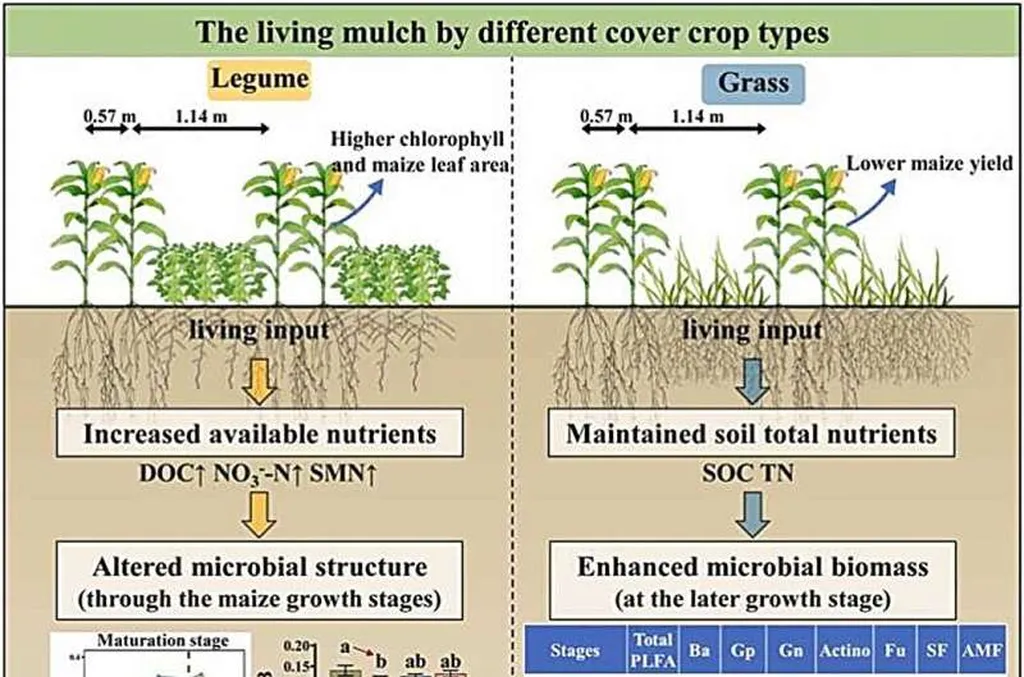In the heart of Louisiana, researchers are uncovering how cover crops and soil amendments can boost nitrogen retention in no-till corn fields, offering promising insights for farmers and the energy sector alike. A recent study led by Wei Dai from the Louisiana State University Agricultural Center, published in the journal “npj Sustainable Agriculture” (which translates to “Nature Partner Journal Sustainable Agriculture”), sheds light on the intricate dance between soil aggregates, nitrogen, and agricultural practices.
The study, which examined the impact of winter cover crops and various soil amendments on nitrogen distribution in soil aggregates, reveals that microaggregates—tiny soil particles between 0.25 and 0.053 millimeters in size—play a pivotal role in nitrogen retention. These microaggregates, which made up 38.3% to 50.1% of the soil samples, were found to contain the largest stock of nitrogen, contributing significantly to the overall nitrogen content in the soil.
“We were surprised to see that the cover crops themselves didn’t have a significant effect on nitrogen distribution,” Dai admits. “However, the application of poultry litter, particularly when combined with flue gas desulfurization (FGD) gypsum and lignite, showed promising results.”
The study found that poultry litter (PL1) improved nitrogen content and stock in medium-sized aggregates (1–0.5 millimeters), while a combination of poultry litter with FGD gypsum and lignite (PL2) enhanced bulk soil nitrogen and stock in larger aggregates (>2 millimeters). This suggests that strategic use of soil amendments can stabilize soil aggregates and increase nitrogen accumulation, supporting overall soil health.
For the energy sector, these findings could open new avenues for utilizing byproducts like FGD gypsum and lignite, which are often seen as waste products. By incorporating these materials into agricultural practices, energy companies could potentially reduce disposal costs and contribute to more sustainable farming methods.
“Long-term studies are needed to fully assess the benefits of cover crops,” Dai notes. “But our findings indicate that soil amendments, especially when combined with strategic fertilization, can play a crucial role in enhancing soil health and nitrogen retention.”
As the agricultural industry continues to seek sustainable and efficient practices, this research offers a glimpse into the future of soil management. By understanding the complex interactions between soil aggregates, nitrogen, and various amendments, farmers and energy companies can work together to create more resilient and productive agricultural systems.
In the words of Dai, “This is just the beginning. There’s so much more to explore, and the potential benefits for both agriculture and the energy sector are immense.” As researchers delve deeper into these relationships, the path to a more sustainable future becomes clearer, one aggregate at a time.

